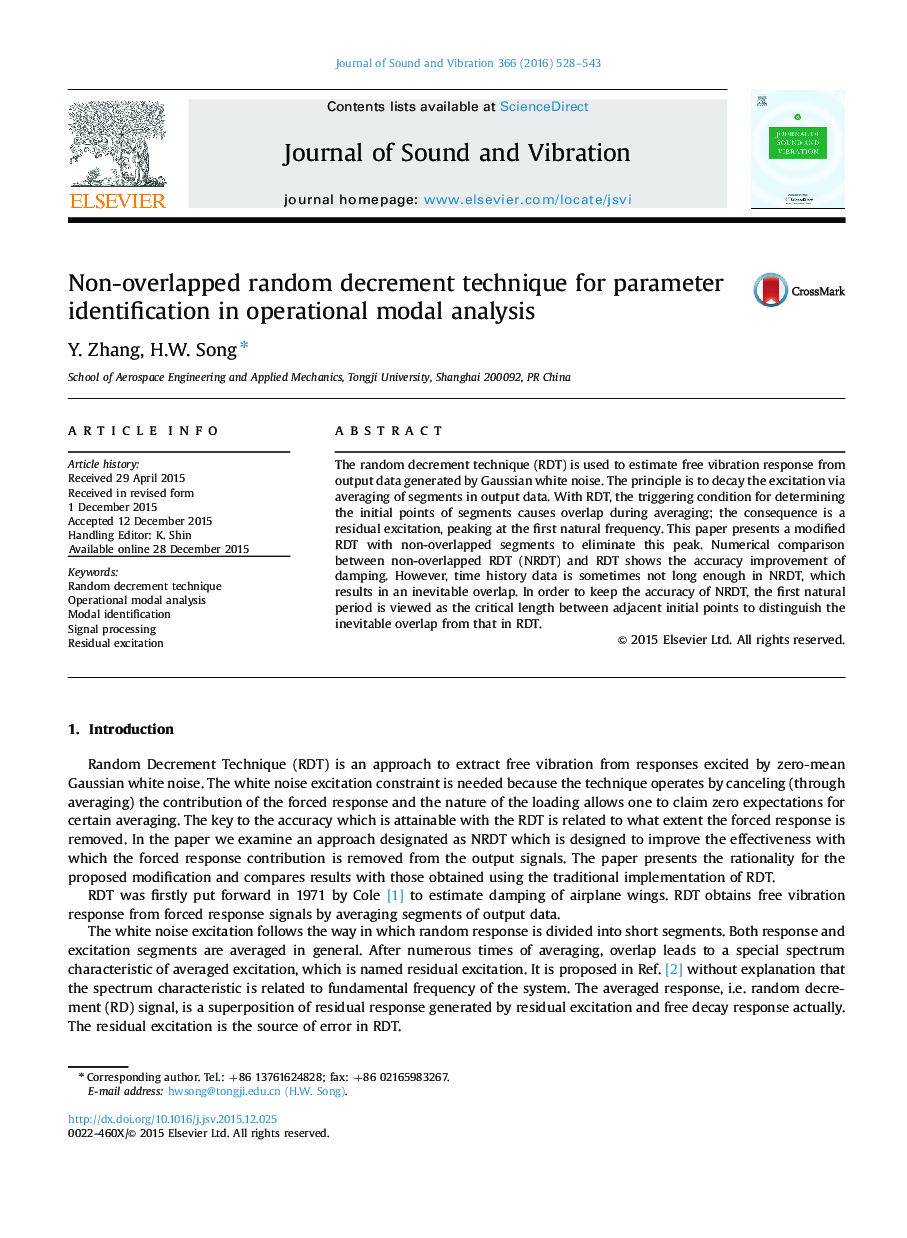| Article ID | Journal | Published Year | Pages | File Type |
|---|---|---|---|---|
| 287111 | Journal of Sound and Vibration | 2016 | 16 Pages |
The random decrement technique (RDT) is used to estimate free vibration response from output data generated by Gaussian white noise. The principle is to decay the excitation via averaging of segments in output data. With RDT, the triggering condition for determining the initial points of segments causes overlap during averaging; the consequence is a residual excitation, peaking at the first natural frequency. This paper presents a modified RDT with non-overlapped segments to eliminate this peak. Numerical comparison between non-overlapped RDT (NRDT) and RDT shows the accuracy improvement of damping. However, time history data is sometimes not long enough in NRDT, which results in an inevitable overlap. In order to keep the accuracy of NRDT, the first natural period is viewed as the critical length between adjacent initial points to distinguish the inevitable overlap from that in RDT.
